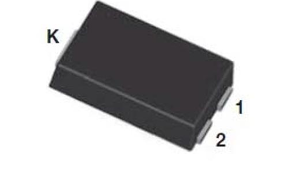Reverse Biasing
Date:2025-05-21 Categories:Product knowledge Hits:424 From:Guangdong Youfeng Microelectronics Co., Ltd
5. Reverse Biasing
When a
Schottky diode is reverse-biased, the anode is made negative with respect to the cathode. The applied reverse voltage increases the height of the Schottky barrier. As a result, the flow of electrons from the semiconductor to the metal is severely restricted. Only a very small reverse leakage current, mainly due to thermally generated minority carriers (holes in the n-type semiconductor), flows through the diode. However, compared to p-n junction diodes,
Schottky diode tend to have a relatively higher reverse leakage current because of the nature of the metal-semiconductor interface.
6. Advantages and Applications
The unique principle of
Schottky diode endows them with several advantages. Their low forward voltage drop reduces power losses in circuits, making them suitable for power rectification applications in power supplies. Their fast switching speed allows them to be used in high-frequency rectifiers, switching regulators, and radio-frequency (RF) circuits. Additionally, their ability to operate at higher temperatures compared to some other diodes broadens their application scope in automotive electronics, industrial control systems, and other harsh - environment scenarios.
In conclusion, the operation of
Schottky diode is rooted in the physics of metal - semiconductor junctions and the behavior of charge carriers. By leveraging the formation and manipulation of the Schottky barrier, these diodes offer distinct electrical characteristics that have revolutionized various fields of electronics.

Previous:
Classification, Structure, and Principle of MOSFET
Next:
Usage of Switching Diodes
